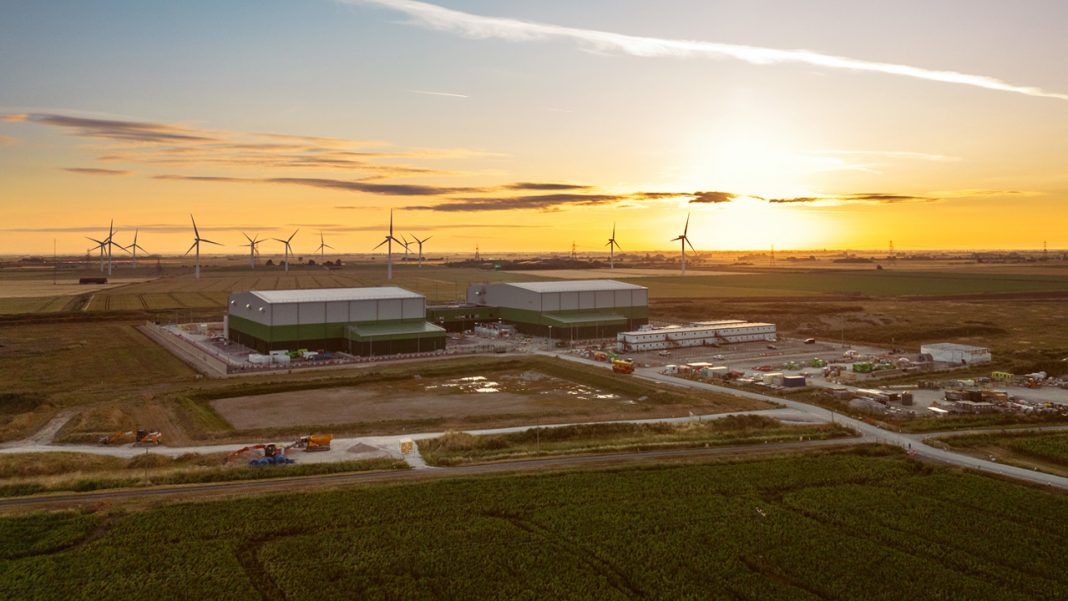National Grid has formally launched the £1.8bn project Viking Link, a 475-mile-long land and subsea cable connecting British and Danish energy grids for the first time.
Running from Bicker Fen converter station in Lincolnshire to one in southern Jutland, Denmark, across both land and sea, Viking Link is sharing British and Danish wind power as both countries become hubs of clean energy in Europe, acting as cornerstone nations for the North Sea super grid of the future.
Viking Link is National Grid’s sixth interconnector and the UK’s ninth, and is a vital instrument in delivering low cost, low carbon power to UK consumers – helping both power grids to balance the peaks and troughs that come with the growing amount of wind power needed to tackle climate change.
Since it commenced initial operations in December 2023, Viking Link has transported 1,733 gigawatt hours (GWh) of power between the two countries – a figure that will only increase over time.
With UK renewables volumes only set to increase, by the 2030s the UK is anticipated to become a net exporter of power, making Viking Link and other interconnectors even more valuable. However, the ability to import power when renewable output is low will be even more vital to ensuring consumer demand is met at the most affordable prices possible.
With Viking Link’s launch and the pipeline of interconnector projects, including LionLink and Nautilus, National Grid is delivering the infrastructure that will directly enable the deployment of 50GW of offshore wind by 2030.
In its first year alone, Viking Link is expected to save 600,000 tonnes of carbon emissions – equal to taking 280,000 cars off UK roads. National Grid’s interconnector fleet as a whole will have helped the UK to avoid around 100 million tonnes of carbon emissions by 2030, with 90% of the energy imported from zero carbon energy sources.
Viking Link alone will bring over £500 million of savings for UK consumers in its first decade of operations, while also providing enough power for 2.5million households.
Group CEO of National Grid John Pettigrew said: “In an ever-changing global energy market, the value that connections like Viking Link can provide to national energy security cannot be understated.
“Over its lifespan, this record-breaking connection will deliver over five billion pounds in efficiencies for UK consumers, allow us to trade hundreds of gigawatts in surplus power and provide an indispensable tool in guaranteeing the continued reliability of our energy system.
“Projects like this are emblematic of the efforts National Grid will make to deliver for customers and climate alike. I’m delighted that we have been able to come together with industry leaders and those who collectively spent four million working hours over five years building Viking Link to recognise that.”
He adds: “Physical connections to other countries are central to the international collaboration that sits at the heart of the energy transition we are undergoing.
“Our existing fleet, Viking Link and our planned Nautilus and LionLink projects will act as the cornerstone for North Sea nations to make the most of up to 300GW of offshore wind generation, delivering low-cost renewable energy to consumers with the least impact on coastal communities.”
Energy Security Secretary Claire Coutinho said: “At 475 miles long, Viking Link is the world’s longest land and subsea interconnector. This incredible feat of engineering will help us achieve net zero while strengthening our shared energy security.
“The record-breaking connection will power up to 2.5 million UK homes with clean energy from a trusted ally, while saving consumers £500 million on their energy bills.”
In 2023 National Grid announced joint plans with TenneT for a new 1.8GW interconnector between the UK and The Netherlands, called LionLink. The link would not only join the two countries but also connect to offshore wind generation.
LionLink would be the second link between the two countries and is expected to be operational in the early 2030s. National Grid is also working with Elia on a second new link called Nautilus, which is in the planning phase with the potential to link the UK with Belgium and offshore wind generation.



